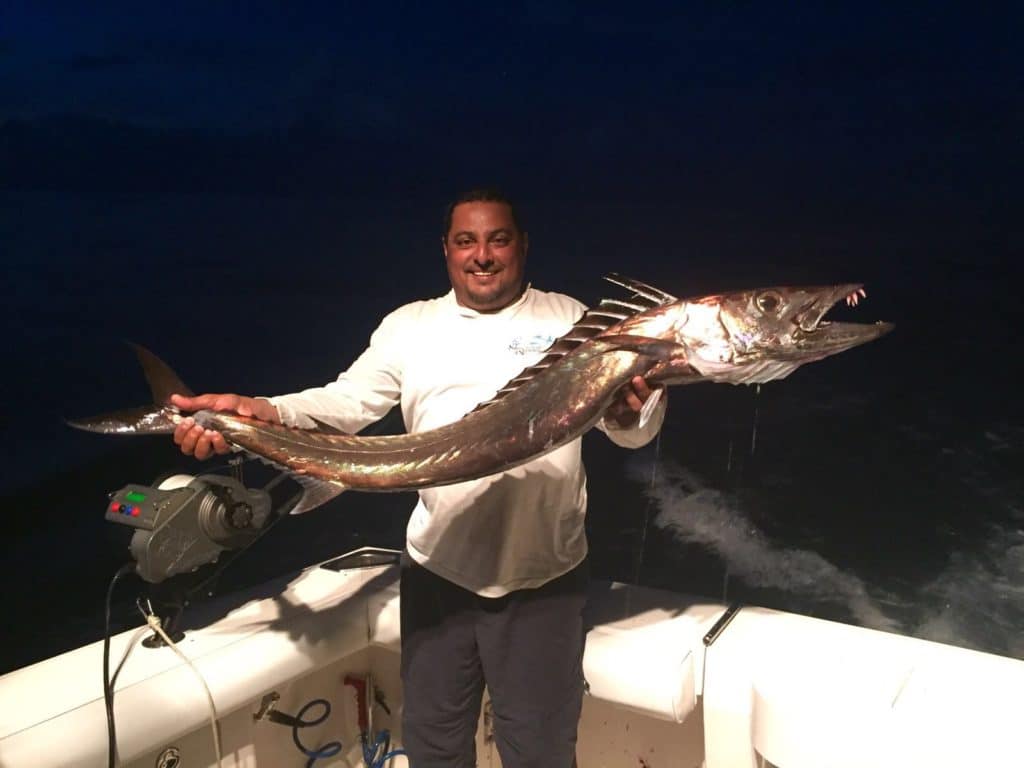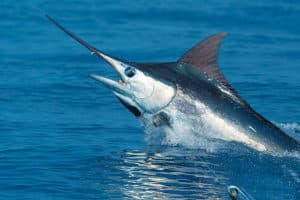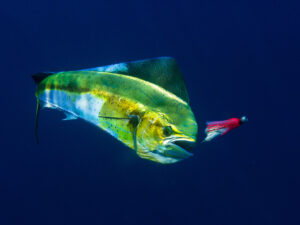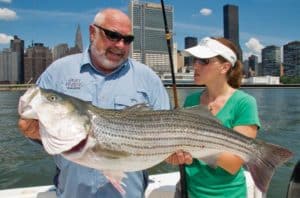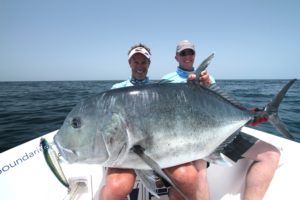In each issue of Sport Fishing magazine, a panel of five international expert ichthyologists identifies unusual and often amazing fishes in photos submitted by readers. Find out what they are and learn fascinating facts about them.
Morse-Code Grouper
QUESTION: While jigging in about 200 feet of water in the Indian Ocean off Desroches Island in the Seychelles, I pulled up this grouper. Our crew didn’t have a name for it. They did say they’d seen it before — but very rarely. What did I catch?
George Large
Port Saint Lucie, Florida
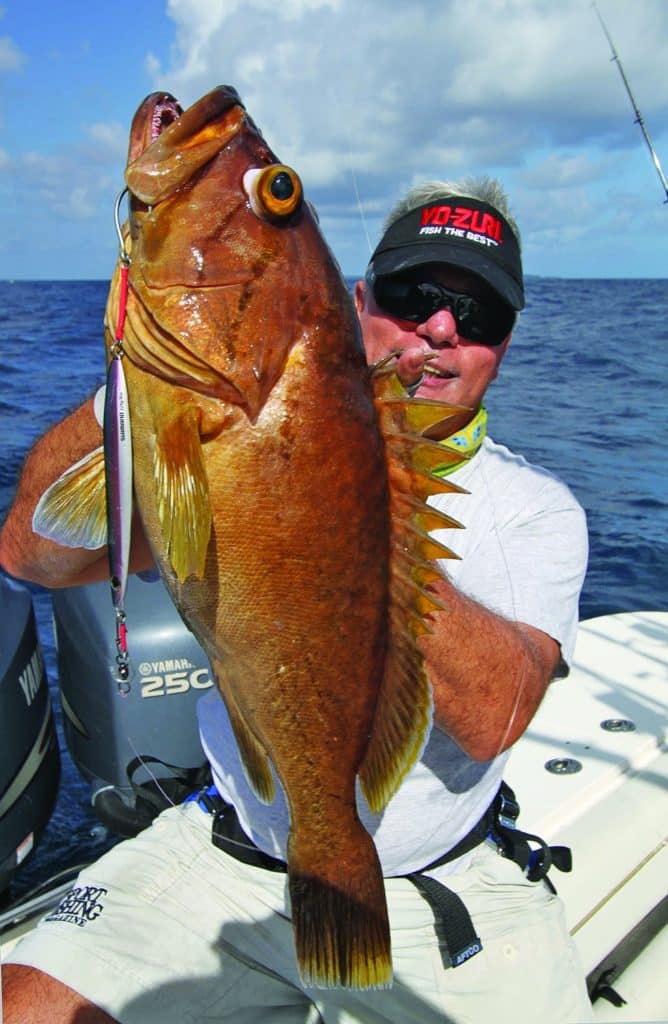
ANSWER: What you have there is a large dot-dash grouper, Epinephelus poecilonotus. The species occurs throughout a wide area of the tropical Indo-West Pacific but is rarely captured. They can be encountered by lucky anglers fishing on reefs from 150 to 1,000 feet deep from the east coast of Africa (including the Seychelles) and throughout the tropical Indian Ocean as far east as Japan, Korea and Fiji.
Dot-dash grouper mature at around 16 inches. They’ve been recorded at more than 2 feet long and 10 pounds in weight, so this one looks about as big as they get. Adult dot-dashes are often confused with other closely related deepwater groupers such as the comet grouper (E. morrhua), but juvenile comets less than 15 inches are readily distinguished by their distinctive stripes versus the black-and-white dots and dashes on the head and body of juvenile E. poecilonotus. Once they mature, however, dot-dash grouper fade to a brownish color and lose most of the dark spots on the body and the dark brown bands on the head (though those remain clearly visible on this specimen). Upon maturity, the dorsal fins also change color to brown with yellowish margins, while the tail becomes a darker black with a white edge.
— Ben DIggles
A Common Thread
QUESTION: I caught this trevally along the Panama coast, near the shore. It resembles an African pompano in some respects, but not exactly. What did I catch?
Dave Bard
Long Branch, New Jersey
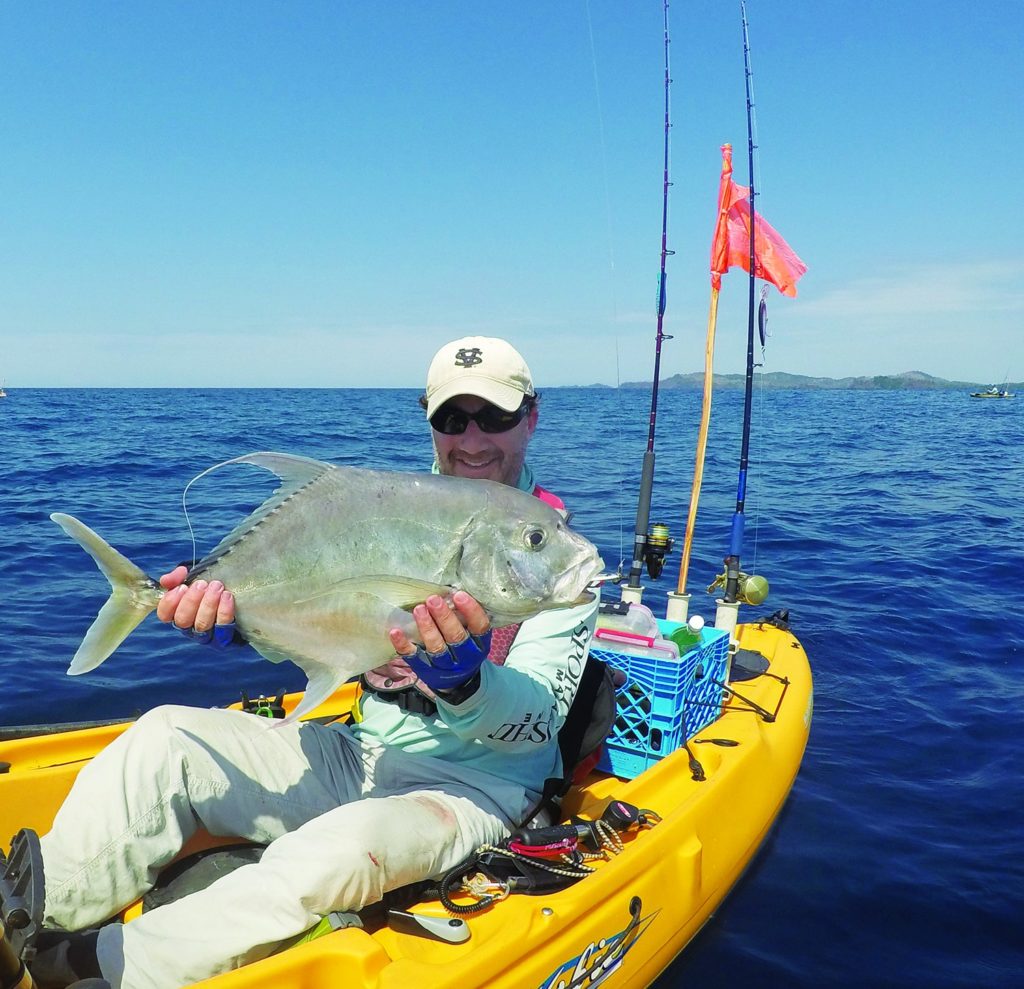
ANSWER: Dave, that extremely characteristic and quite long threadlike extension to the dorsal and anal fins can only mean that you caught the aptly named threadfin jack (or trevally), Caranx otrynter. Found from Bahia Magdalena, southern Baja, to Ecuador, including the lower and central Gulf of California and the Galapagos, this jack lives in estuaries and along the open coast, both around reefs and over soft seafloors. The species, which grows to about 26 inches long, ranges from the surface (occasionally with its back out of the surface in nearshore waters) down to depths of more than 300 feet. I usually see this species in pairs or groups of several to 15, sometimes rooting about in the seafloor and other times actively pursuing prey (which includes fishes and small crustaceans) in midwater. Threadfin are taken both by hook-and-line and in various nets, and are sold mostly fresh, although some are salted for later sale. No all-tackle world record for the threadfin jack has yet been established with the International Game Fish Association for this species.
— Milton Love
It’s a Conger — For Eel
QUESTION: We caught this eel off the coast of Cancun in the Caribbean Sea in about 180 feet of water on a small piece of cut bait. I want to call it a yellow conger, but the ID in my book says yellow conger grow to about 7 inches and have a black margin on their fins. This had a white margin and was about 20 inches long. Ideas?
Dom Porcelli
Cincinnati, Ohio
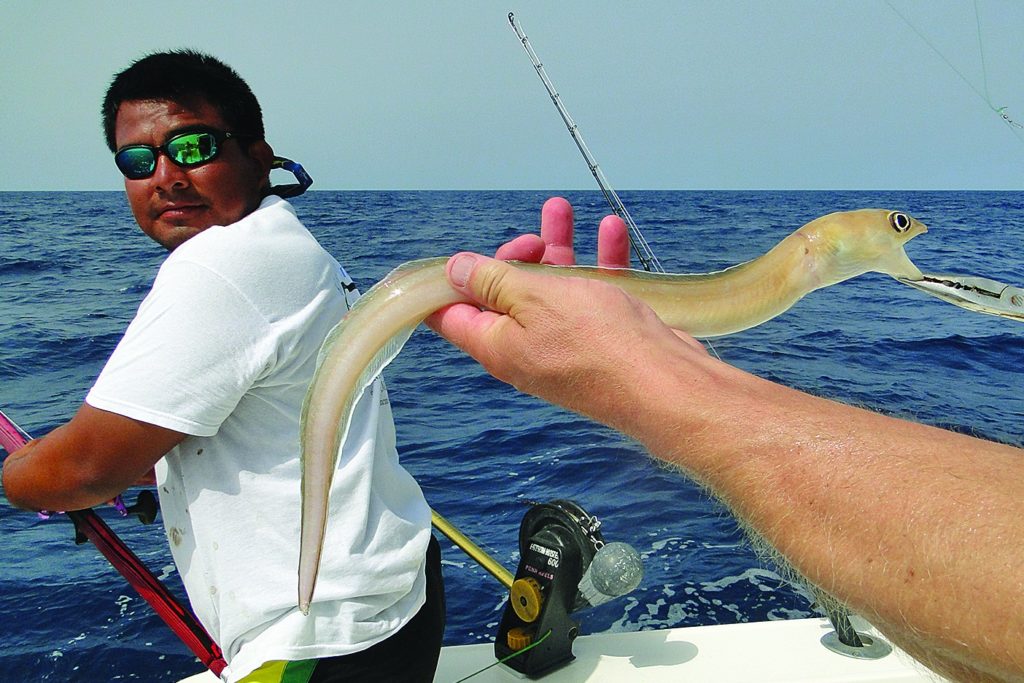
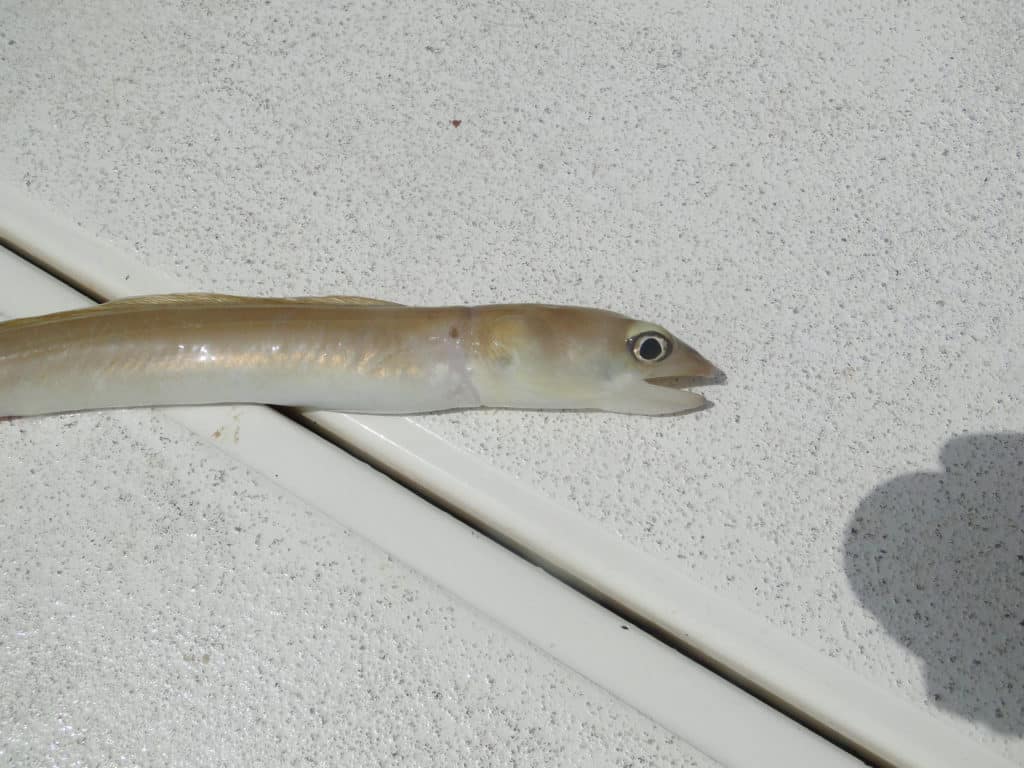
ANSWER: Dom, your eel appears to be a yellow conger, Rhynchoconger flavus, just as you suggest. However, as you also note, yellow congers typically have dark margins on the posterior portions of their dorsal and anal fins. Relatively little is known about the yellow conger, though apparently it appears to reach a maximum length of around 30 inches. Its known range extends from the Gulf of Mexico to the mouth of the Amazon River, at depths from 80 to more than 500 feet. There is some confusion regarding the identification of this eel; it has been known by at least 20 different scientific names, and some ichthyologists have suggested that the whiptail eel, R. gracilor, which has approximately the same distribution as the yellow conger, is just a morphological variation of the later species. The increasing use of biochemical testing techniques involving comparisons of proteins and DNA should help provide answers to taxonomic questions such as this. *
— Ray Waldner
Geriatric Bluefish
QUESTION: I’ve been fishing for bluefish aboard a party boat here in Brooklyn for many years and have become familiar with many of the usually productive areas. There’s an area a few miles offshore of Sea Bright, New Jersey, known as the Mud Buoy. It’s been a dump area for barges loaded with dredge from the harbor and rivers that have created an artificial reef with several high spots. Over the past 10 or so years, we’ve seen blues that run exceptionally large, and have gotten larger and heavier every year. I landed two fish over 22 pounds, and I’ve seen others caught on the boat as large or larger, all in the same area. The heaviest blue that I managed since the early ’70s until recent years had been about 17 pounds. This has led me to wonder, what is the life expectancy of bluefish? How old would you guess a blue like that in photo might be?
Michael Weiss
Brooklyn, New York
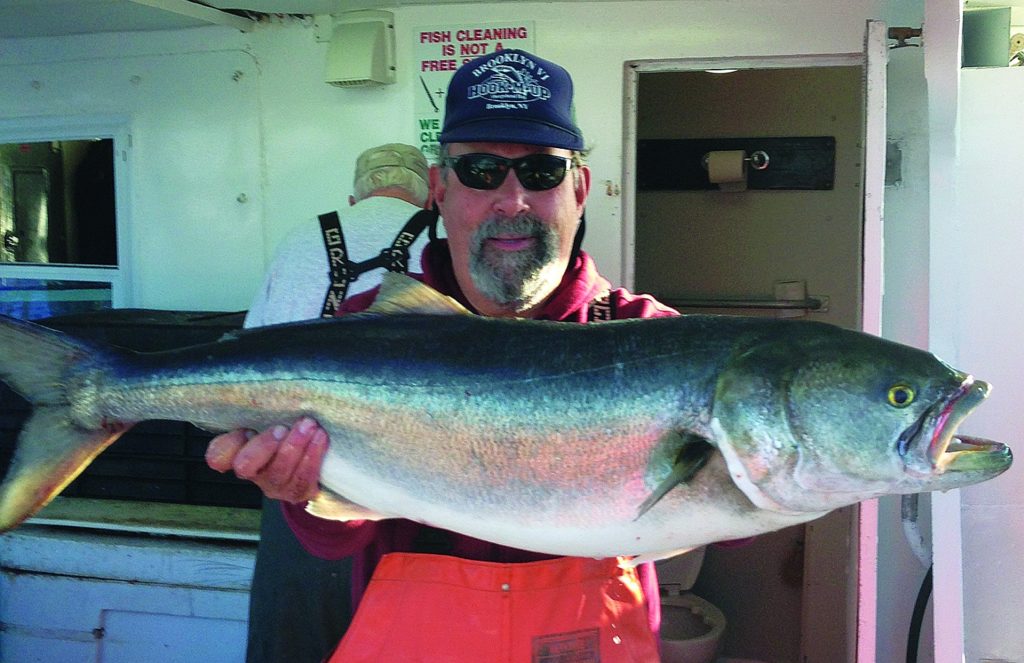
ANSWER: Bluefish can be expected to live to 12 or 13 years, at which time their growth rates have leveled off at about 35 inches in length. The IGFA’s all-tackle record caught in 1972 off Cape Hatteras was a 31-pounder, measuring nearly 47 inches. Rumors of fish weighing upwards of 50 pounds in the last half of the 18th century cannot be verified. Bigger bluefish currently being caught off the East Coast generally range between 10 and 15 pounds. The fish you’re holding is probably 12 to 13 years old. As for size differences between specific localities (e.g., the Mud Hole off New Jersey), available evidence does not allow for speculation, nor can I find any data that would indicate annual trends in maximum size. But it looks like you’ve found a fishing spot you’re happy with, and one which produces the occasional lunker.
— Mike Fahay
From the Fish Facts Archives
TIGER GROUPER (Mycteroperca tigris)
These solitary reef dwellers are widespread throughout the Caribbean, including South Florida and the Gulf of Mexico, but an infrequent prize for anglers. The IGFA all-tackle world-record tiger is a 14½-pounder from Bimini in May 1993. Like all groupers, the tiger is superb eating; however, like many groupers in the Caribbean, it has been implicated in ciguatera poisonings.
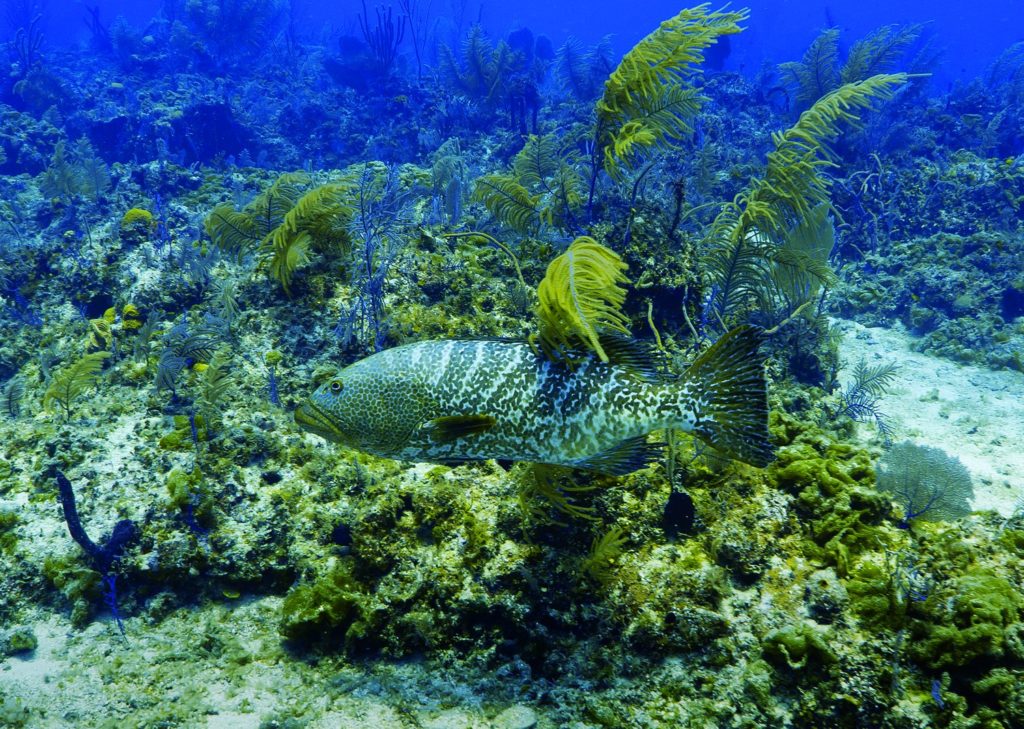
Sport Fishing‘s Prestigious International Panel of Experts
Northeast
Mike Fahay, Sandy Hook Marine Lab, New Jersey
Southeast
Ray Waldner, Ph.D., Palm Beach Atlantic University, Florida
Gulf of Mexico
Bob Shipp, Ph.D., University of South Alabama
West Coast
Milton Love, Ph.D., UCSB, California
Far Pacific
Ben Diggles, Ph.D., Queensland, Australia
Bluewater Pelagics
John Graves, Ph.D., Virginia Institute of Marine Science
CHALLENGE OUR EXPERTS (And Win Up to 10,800 Yards of Line!)
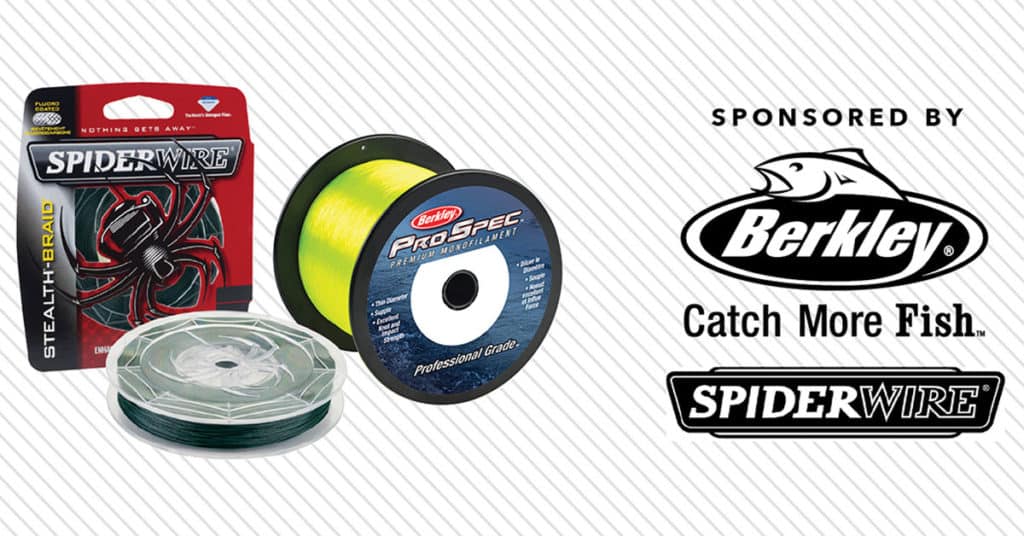
Send in your question and any relevant photos of your mysterious catch or observation for our experts’ ID and feedback. If we publish your question and you have a shipping address within the United States or Canada, you’ll win a 3‑pound spool of Berkley Pro Spec ocean-blue or fluorescent-yellow monofilament (1,000 to 10,800 yards, depending on line strength) or a 1,500‑yard spool of Spiderwire Stealth braid up to 100‑pound‑test! Send questions and images via email to fishfacts@sportfishing (include your hometown) or via post to Sport Fishing Fish Facts, 460 N. Orlando Ave., Suite 200, Winter Park, FL 32789.
